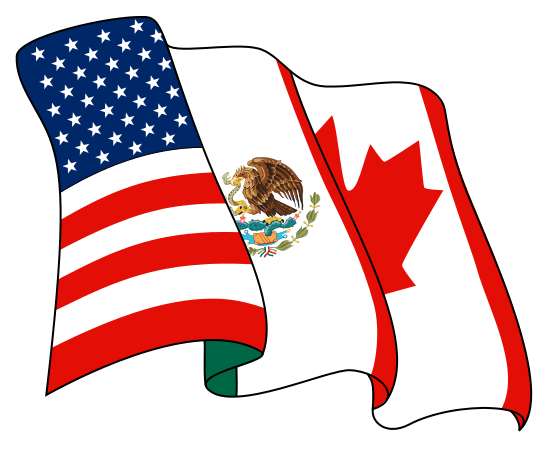Facts for Kids
The North American Free Trade Agreement was a deal made in 1994 by Canada, Mexico, and the United States to help them trade more easily without extra costs, creating jobs and boosting businesses in all three countries.
Overview
History Of NAFTA
Key Objectives Of NAFTA
Major Provisions Of NAFTA
NAFTA S Role In Global Trade
Labor And Environmental Standards
Challenges And Criticisms Of NAFTA
Economic Impact On Member Countries
Impact On Agriculture And Manufacturing
Future Of Trade Agreements In North America
Renegotiation And The United States Mexico Canada Agreement USMCA

Inside this Article
Climate Change
United States
Cooperative
America
Product
Future
Canada
Mexico
Market
People
Trade
Did you know?
🇨🇦 NAFTA was signed in 1994 by Canada, Mexico, and the United States.
📦 This agreement made it easier for these countries to trade goods without extra taxes called tariffs.
💼 NAFTA helped create more jobs by allowing businesses to grow and sell more products.
📈 Trade between the three countries more than doubled from 1993 to 2016.
🛍️ NAFTA aimed to remove tariffs to make toys, cars, and foods cheaper for everyone!
🌍 It also included rules to protect the environment and workers' rights.
🏭 Sometimes, factories moved to Mexico because it was less expensive to pay workers there.
🛠️ NAFTA allowed companies to freely send goods across the borders of Canada, Mexico, and the United States.
📊 By 2018, trading between these countries reached an impressive $1.2 trillion!
✍️ In 2018, leaders updated NAFTA to create the United States-Mexico-Canada Agreement (USMCA).
Introduction
️
History Of Nafta
Key Objectives Of Nafta
Another goal was to make sure businesses could invest in each other's countries, helping everyone grow economically 🌱. Lastly, NAFTA aimed to make trading rules fairer for workers and to protect the environment 🌍. It created a more cooperative relationship between the three nations, which helped them become friends! 🥳
Major Provisions Of Nafta
️
Nafta's Role In Global Trade
Labor And Environmental Standards
To make sure workers were treated fairly, the agreement encouraged each country to follow laws that protected workers' rights 👷. This included safe working conditions and fair pay! Additionally, NAFTA wanted to protect nature by encouraging sustainable practices 🌳. While it wasn't perfect, it did set the stage for future agreements to further protect workers and the environment. Many believe that better rules are needed to help people and nature more effectively! 🌍
Challenges And Criticisms Of Nafta
️ Critics also said that NAFTA allowed companies to escape environmental rules, which could hurt nature. Many people wanted better protections for workers, the environment, and small businesses! It was a tricky puzzle that brought about many discussions! 🧩
Economic Impact On Member Countries
This meant that businesses in all three countries could sell more products. As they sold more, they needed more workers! More jobs were created, and some people even earned better pay 🎖️. However, while some industries, like agriculture, boomed, others faced tough challenges. For instance, some factories closed because cheaper products from other countries flooded the market. This meant that not everyone benefited equally.
Impact On Agriculture And Manufacturing
In agriculture, farmers could sell their products more easily to their neighbors. For example, the U.S. and Mexico became the biggest trading partners for many fruits and vegetables! 🍅🌽 On the manufacturing side, cars became a major product traded. Many cars sold in the U.S. used parts made in Mexico and Canada. While this helped some businesses, it worried others about job losses. Overall, it changed how food and products were made and traded across borders! 🚗
Future Of Trade Agreements In North America
With new technologies and global challenges like climate change, countries will need to come together and rethink how they trade 📅. The USMCA is just one example of how countries can adapt and improve their agreements! Future trade deals may focus even more on the environment and protecting workers and small businesses. It is exciting to think about what these agreements can do to help people and the planet! 🤝🌎

